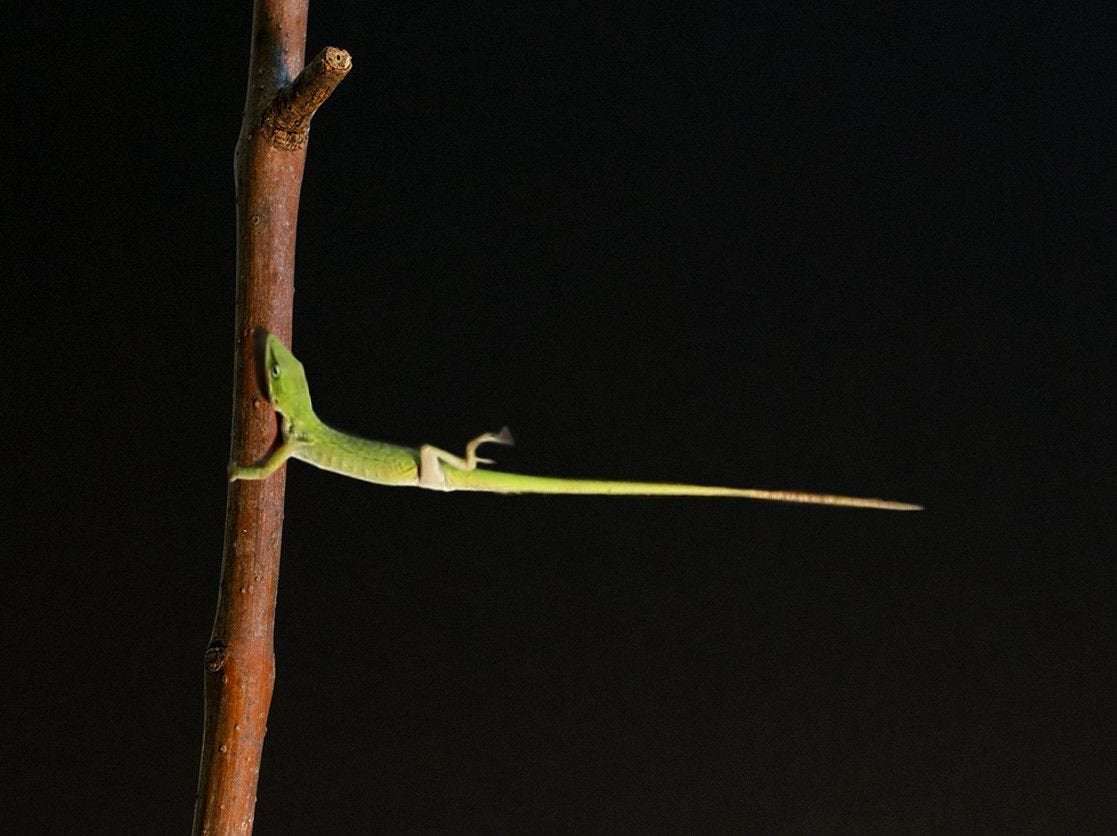Lizards with bigger, grippier toe pads are more likely to survive after their islands are hit by hurricanes. Big toe pads may help the lizards that have them hang on for dear life and survive the high winds of a hurricane. These sticky-toed survivors will then be the ones to successfully reproduce and pass on their genes, giving rise to a new generation of lizards with a vice-like grip, according to a new paper published this week in the journal Proceedings of the National Academy of Sciences.
This observation is textbook natural selection, but it suggests that a bout of extreme weather is enough to change the evolutionary fortunes of a species—something many evolutionary biologists had assumed wasn’t possible, reports Nick Carne in Cosmos. Ecologists previously thought that once life returned to normal following the natural disaster, whatever special adaptations might have been temporarily useful amid the catastrophe would fade out.
A circumscribed version of these findings appeared in a 2018 research paper dealing with a single species of anole lizards on the Caribbean islands of Turks and Caicos following Hurricanes Irma and Maria.
“This is a striking case of rapid evolution, which, as we can see here, can proceed exceedingly fast, even within a generation,” Carol Lee, an evolutionary biologist at the University of Wisconsin-Madison who was not involved in the research, told Ed Yong of the Atlantic in 2018. “I expect there will be many more cases like this in the future, where catastrophic events impose strong selection on populations, and where populations will need to evolve or go extinct.”
The researchers wanted to follow up on those 2018 results to see if what they saw on Turks and Caicos might be true elsewhere. To find out, the team used photos from natural history collections to measure a lot of lizard feet—some 188 different anole lizard species were assessed.
Next the researchers compared those measurements to seven decades of hurricane data to see if there was any connection between toe pad size and stormy weather.
The team’s earlier finding held up. They found that lizards have larger toe pads in places that have been hit by multiple hurricanes in the last 70 years. This was true across 188 different species of anole scattered across the Caribbean as well as Central and South America. In locales that hurricanes spared, lizards’ toe pads were smaller, reports Joshua Sokol for the New York Times.
If, as climate research suggests, hurricanes become more severe because of climate change, will these lizards’ toes just keep getting bigger and bigger?
“These toe pads are not going to turn into big snowshoes, or something like that. There's a balance,” says Colin Donihue, first author on the paper and evolutionary ecologist at Washington University in St. Louis, in a statement. “Most of the selective pressure is to just be good at being a lizard: to go catch food, find a mate and avoid predators."
A future full of powerful hurricanes may have evolutionary implications for other species as well, Donihue tells Ryan Prior of CNN. “My best guess is that this isn’t just a lizard thing,” says Donihue in a statement. Studies of trees, snails or birds in the Caribbean could be next in line.
“We need more such studies,” Craig Benkman, an ecologist at the University of Wyoming who helped peer review the paper, tells the Times. “And unfortunately, we are likely to be overwhelmed with opportunities in the coming decades.”

daynage on August 29th, 2020 at 16:35 UTC »
This is an example of the ‘bottleneck effect’ and is one of a handful of circumstances that can shape what traits can be naturally (or randomly) selected upon
Mrsphinctercontrol on August 29th, 2020 at 16:25 UTC »
Isn't everything in nature an agent of natural selection?
tomboski on August 29th, 2020 at 15:12 UTC »
Makes you realize that evolution must constantly take giant leaps through cataclysmic events. I wonder how many times humans have been drastically reshaped through similar extreme events.